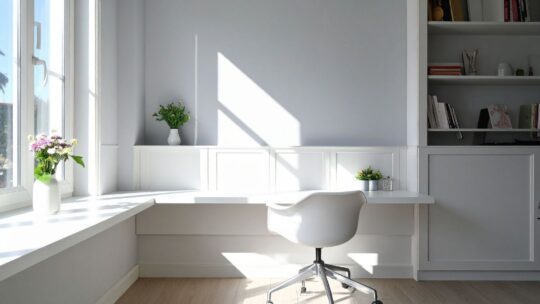Walking into a dim, shadowy room can feel like stepping into a cave. The space feels smaller, the air seems heavier, and somehow even your mood takes a subtle dive. We’ve all experienced those dark corners of our homes that seem to resist every attempt at brightening them up. But here’s the thing: you don’t always need to knock down walls or install expensive skylights to transform these gloomy areas. Natural light optimization can work absolute wonders, turning your darkest spaces into vibrant, welcoming rooms that feel twice their actual size.
The magic of natural light goes far beyond simple aesthetics. When sunlight floods into a room, it fundamentally changes how we experience that space. Colors appear more vibrant and truer to life. Textures become more visible and interesting. Even the temperature of a room can feel different when bathed in natural daylight. This isn’t just perception either. Studies have consistently shown that exposure to natural light improves our mood, boosts productivity, and even helps regulate our sleep patterns. When you optimize for natural light, you’re not just decorating, you’re investing in your wellbeing.
So how do you coax more daylight into those stubborn dark spaces? The first step is understanding that natural light is surprisingly flexible. It bounces, reflects, and travels in ways that give you plenty of creative options. Start by examining your windows. Are they blocked by heavy curtains or cluttered windowsills? Sometimes the simplest solution is removing obstacles that stand between your room and the sunlight trying to reach it. Swap out those thick drapes for sheer, light-filtering curtains that maintain your privacy while letting sunshine pour through.

Mirrors are your secret weapon in the battle against darkness. A strategically placed mirror can capture natural light from a window and bounce it deep into areas that would otherwise remain in shadow. Try positioning a large mirror directly across from a window or angling it to redirect light toward a particularly dim corner. The effect can be dramatic, essentially doubling the impact of whatever natural light you have available. This technique works especially well in narrow hallways and small bedrooms where every ray of sunshine counts.
Color choices play a surprisingly crucial role in natural light optimization. Dark walls absorb light, while pale, reflective surfaces send it bouncing around the room. Painting your walls in soft whites, warm creams, or gentle pastels can amplify whatever natural light enters your space. The same principle applies to your floors and furniture. Light-colored wood, pale rugs, and furniture in neutral tones all contribute to a brighter, more open feeling. While modern lighting fixtures are certainly important for evening hours, maximizing natural light during the day reduces your reliance on artificial sources and creates a more dynamic, living atmosphere.
Don’t overlook the power of reflective surfaces beyond mirrors. Glossy finishes on furniture, metallic accents, and even glass tabletops can help spread natural light throughout a room. Consider replacing solid cabinet doors with glass-fronted ones in kitchens and dining areas. The transparent surfaces allow light to penetrate deeper into the space while adding a sense of openness and depth.
Interior doors present another opportunity for optimization. If privacy isn’t a concern, replacing solid doors with French doors or frosted glass options allows natural light to flow between rooms. This creates a connected, airy feeling throughout your home and ensures that light from sun-facing rooms can benefit adjacent spaces. Even keeping interior doors open during the day can make a noticeable difference in how bright your home feels.
Window treatments deserve special attention because they directly control how much light enters your space. Beyond choosing lighter fabrics, consider the style of your treatments. Top-down, bottom-up shades give you the flexibility to let light in from above while maintaining privacy at eye level. Mounting curtain rods higher and wider than your actual windows creates the illusion of larger windows and allows you to pull curtains completely away from the glass when open.
The exterior of your home matters too. Overgrown trees and shrubs might be blocking more light than you realize. Strategic trimming can open up natural light pathways without sacrificing your landscaping. Clean windows regularly, both inside and out, because even a thin layer of grime can reduce light transmission significantly.
Natural light optimization isn’t about achieving harsh, glaring brightness. It’s about creating balanced, comfortable illumination that changes throughout the day, connecting you with the natural rhythms of sunrise and sunset. When you successfully optimize for natural light, your dark spaces don’t just become brighter—they become more alive, more dynamic, and infinitely more pleasant to spend time in.

The transformation doesn’t require a massive renovation budget or months of construction. Sometimes the most effective changes are the simplest ones: moving a mirror, changing a paint color, or rethinking your window treatments. Start with one dark room and experiment with these techniques. You might be amazed at how much new life you can breathe into a space that once felt hopelessly dim.


















